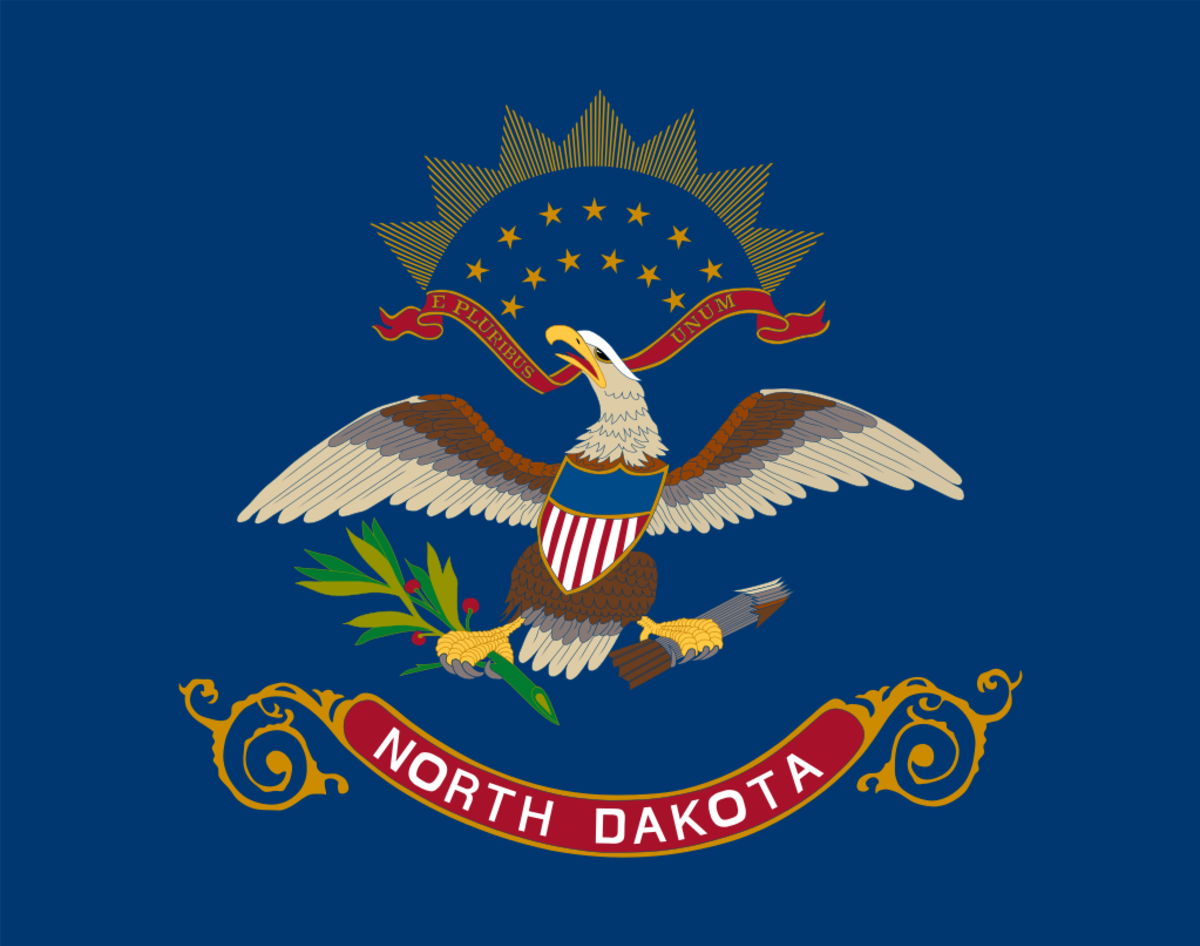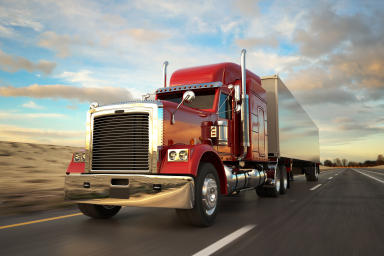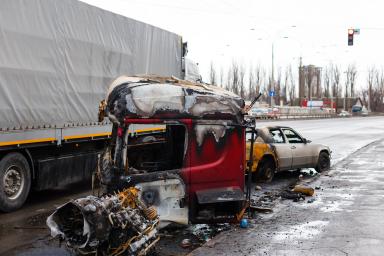North Dakota recorded 4,931 heavy truck-related accidents from 2017 to 2022, which resulted in 1,463 injuries and 88 fatalities. The majority of these crashes (69.2%) occurred in rural areas. According to the US Bureau of Labor Statistics, heavy and tractor-trailer truck drivers accounted for 5 of the 10 fatalities among transportation and material moving employees in 2021. Statistics also show that one truck collision happens about every 12 hours, with fatigue, speeding, and drunk driving being some of the leading causes. Interstate 94, Interstate 29, US Highway 85, and US Route 2 are among the state's most accident-prone highways.
The Federal Motor Carrier Safety Administration (FMCSA) imposes regulations on the trucking industry in North Dakota. These regulations include the requirement of obtaining a commercial driver's license (CDL).
This article discusses traffic laws aligned with the state's Vision Zero strategy and targeted at decreasing truck accident injuries and deaths. It also includes pertinent information on the minimum insurance requirements and personal injury liability guidelines for North Dakota truck drivers, trucking companies, accident victims, and plaintiffs.
North Dakota Interstate and Intrastate Hours of Service Regulations
North Dakota commercial motor vehicle (CMV) drivers carrying property are required to follow the federal hours of service regulations. This is to ensure they stay awake and alert while navigating highways and to avoid truck accidents due to fatigued driving. Nationwide statistics from the FMCSA show that drowsiness contributes to 1.5% of fatal truck accidents every year. The department has launched an online educational tool that allows users to see if their records of duty status are violating the rules.
Truck accidents caused by drowsy drivers result in property damage, severe injuries, and fatalities, which is why authorities strictly enforce the HOS regulations. Truck drivers who violate the rules could face traffic citations, fines, and even lawsuits. Additional information about regulatory changes can be accessed on the FMCSA website.
Truck Driver's Electronic Logging Devices and Log Books
Truck drivers are mandated to record data related to driver activity and vehicle operation using an electronic logging device (ELD). Drivers may be exempt from the ELD requirement if they use a paper record of duty status (RODS) or log book for no more than 8 days out of every 30 days, conduct drive-away-tow-away operations, or drive vehicles built before the year 2000. These government-mandated systems are critical in ensuring that CMV operators aren't overworked and that their trucks are safe to operate, which reduces the occurrence of truck accidents. In the event that a truck driver is involved in a crash, their log book can be used as evidence in the ensuing investigation.
North Dakota Statutory Maximum Speed Limit Laws
All motor vehicle drivers in North Dakota must follow the state's speed limit laws. Accident figures in the state indicate that 34% of fatal crashes in 2021 involved speeding and/or aggressive driving. The North Dakota Department of Transportation (NDDOT) also reported that in the same year, vehicles weighing over 10,000 pounds were more prone to accidents from October through March than during the warmer weather months.
These concerns prompted authorities to strictly implement rules requiring commercial motor vehicle drivers to reduce speed in hazardous conditions, especially when snow, sleet, mist, rain, or fog impair the driver's visibility or traction. In addition, truck drivers are prohibited from exceeding 40 mph if the vehicle's gross vehicle weight rating exceeds 120,000 pounds or is more than 5,000 pounds over legal axle weight limits. This prohibition, however, does not apply if they are traveling on I-94 or I-29.
The table below shows the state's statutory maximum speed limits.
Penalties for violating the speed limits can be found in the North Dakota Classification of Offenses.
Reckless Driving and Vehicular Manslaughter
Truck drivers in North Dakota who endanger the well-being or property of another by driving in a manner that involves excessive speeding may be charged with reckless driving. They could face up to $3,000 in fines, one year behind bars, and 12 points on their license. Data from the NDDOT shows that nearly 10% of the collisions that involved heavy vehicles were speed-related. State law also states that CMV drivers who kill another person due to reckless driving can be charged with manslaughter, which is punishable by up to $20,000 in fines and up to ten years in jail.
North Dakota Distracted Driving Laws and Cell Phone Restrictions
Distracted driving, which includes taking one's eyes off the road, one's hands off the wheel, and one's mind off of driving, is one of the country's fastest-growing road safety hazards. The National Highway Traffic Safety Administration (NHTSA) revealed that distracted driving claimed 3,522 lives in 2021 across the country. These statistics have prompted governments to create legislation targeted at minimizing traffic fatalities and injuries.
Commercial motor vehicle drivers in North Dakota are not permitted to use a mobile phone to conduct a voice conversation or to compose, read, or transmit an electronic message. Truck drivers are also prohibited from texting unless in an emergency. According to state law, texting while driving includes emailing, instant messaging, and browsing a website. These rules apply to the drivers of the following vehicles:
All CMVs in interstate commerce
CMVs over 26,000 pounds in intrastate commerce
CMVs hauling hazardous materials that require placarding
Distracted drivers are six times more likely to crash than intoxicated drivers. Experts say that sending a text message at 55 mph is like driving the length of a football field blindfolded. Those who violate the distracted driving law will be fined $100. Truck drivers who harm or kill another due to distracted driving can receive a reckless driving conviction with up to a year in prison and a maximum of $3,000 in fines. They may also be charged with vehicular manslaughter, which carries up to $20,000 in fines and a 10-year maximum jail sentence.
North Dakota Driving Under the Influence Laws
North Dakota prohibits CMV drivers from drinking alcohol before operating their vehicle, as doing so endangers other road users due to alcohol dulling their vision, impairing their judgment, and interfering with their concentration. According to statistics, alcohol is a factor in 39% of fatal crashes in the state each year. In North Dakota, the "per se'' alcohol concentration is 0.08%, while the alcohol concentration limit for commercial vehicle operators is 0.04%. Truck drivers may still face DUI charges if they are intoxicated to the point of being incapable of safe driving, even if their BAC is below the legal limit. Truckers found to be impaired by alcohol while driving may face penalties such as hefty fines, CDL revocation, and imprisonment. Criminal vehicular injury and homicide in North Dakota can result in jail sentences of up to 5 years and up to 20 years, respectively.
North Dakota Commercial Trucking Insurance Requirements</h2>
All motor vehicles operating on any road or highway are mandated to have a liability insurance policy. North Dakota law, which is in line with the rules set by the FMCSA, requires local truck drivers and operators to purchase and maintain a certain amount of public liability insurance.
The table below shows the minimum liability insurance requirements for truckers according to the type of goods or commodities they are transporting.
Liability insurance helps policyholders pay for injuries sustained by those involved in a truck accident or damage to any property. It can also pay for legal fees and court costs should an accident victim decide to sue the trucking company following a collision. Commercial vehicle operators can select which coverage they want to include in their policies. Typical options for insurance coverage include the following:
Liability for bodily injury to others
Personal injury liability (medical costs and lost earnings)
Property damage liability
Collision coverage for accident-related costs, regardless of who is at fault
Comprehensive non-collision-related damage coverage
Funeral cost coverage
Non-owned auto coverage
Uninsured and underinsured motorist coverage
Towing and labor cost coverage
Loading and unloading liability
According to the North Dakota Insurance Department, commercial vehicles weighing more than 20,000 pounds are not required to carry uninsured and underinsured motorist coverage. The US Department of Transportation and the North Dakota state government require the insurance agents or carriers of trucking operators to submit the necessary forms, including the MCS-90 and BMC-91, within the deadline set by the FMCSA. More information about the insurance filing requirements is available on the FMCSA website.
How Much Can Someone Sue for a Truck Accident in North Dakota
Truck accidents can result in severe injuries and fatalities. Since each case has varying contributing factors, there is no fixed amount that a victim can seek following a truck accident. Truck accident lawyers assist wounded individuals and relatives of deceased victims in filing lawsuits against the responsible parties to recover economic and non-economic damages. They can assist with proving the negligence of any of the following entities:
The driver of the truck or other vehicles involved in the crash, if any
The trucking firm
The manufacturer of a faulty truck or truck component
The cargo loader
The mechanic in charge of truck maintenance and repairs
The government entity in charge of road maintenance
North Dakota Statute of Limitations for Truck Accidents
Victims of truck accidents in North Dakota have six years after sustaining personal injury or property damage to initiate a case against the at-fault party in the state's civil court system for compensation. The counting starts at the time of the crash. Meanwhile, relatives of people who died due to accidents caused by the negligence of a truck driver or trucking firm must bring a wrongful death lawsuit within two years of the victim's death.
North Dakota Is a No-Fault State for Insurance Claims
The State of North Dakota follows a "no-fault" car insurance system. It means victims of motor vehicle accidents are mandated to use their basic no-fault or PIP coverage to pay for their hospital costs, lost wages, and other economic losses, regardless of who caused the crash. Victims can only file a third-party insurance claim or personal injury lawsuit against the liable party to obtain compensation for their non-economic losses, including pain and suffering if they meet either of the two thresholds:
Their total medical costs exceed $2,500.
They had "serious and permanent disfigurement or disability" that lasted more than 60 days.
North Dakota Is a Modified Comparative Fault State for Trucking Accident Lawsuits
North Dakota Century Code Section 32-03.2-02 outlines the state's modified comparative fault rule in force. Under this contributory fault scheme, the injured party's damages judgment is lowered by the percentage of his or her share of fault. However, to collect from the defendant, a plaintiff must be found to be less than 50% liable by a judge or jury.
Average Settlement for North Dakota Trucking Accident Lawsuits
As mentioned in a previous section, there is no defined average compensation for trucking accident lawsuits in North Dakota. The degree of injuries, agony and suffering, and financial losses are all considered in each case. If a plaintiff sues the truck driver or trucking firm under the state's modified comparative fault statute, they will only obtain compensation according to their share of liability. For example, if a jury decides that the total damages award for an injured victim who was found 40% guilty of an accident is $200,000, the wounded person will only receive 60% of the amount, or $120,000.
Plaintiffs should contact skilled truck accident attorneys to assist them in proving that the other party was more to blame for the incident. Some legal professionals offer representation on a contingency basis. A contingency fee arrangement requires a plaintiff to pay no legal expenses until the lawyer obtains a financial settlement.
Legal Resources for North Dakota Trucking Accident Victims
Legal Services of North Dakota
The Legal Services of North Dakota (LSND) is dedicated to protecting and enhancing the civil legal rights of low-income or elderly North Dakotans by providing free legal assistance in civil cases. LSND has offices in Fargo, Bismarck, Belcourt, Minot, New Town, and Grand Forks. The organization receives approximately 8,000 applications for legal assistance annually and is able to cater to around two-thirds of the requests. Applicants may read the disclaimer before submitting a request for assistance.
State Bar Association of North Dakota's Lawyer Referral & Information Service
Individuals seeking legal assistance and willing to pay for it can utilize the Lawyer Referral & Information Service (LRIS). This public service connects clients with appropriate lawyers who are not on a volunteer or reduced-fee program. LRIS can be contacted by phone at 866-450-9579 between 9 a.m. and 12 p.m. and 1 p.m. to 4 p.m. from Monday to Friday. For a fee of $30, a referral can be provided which includes the attorney's name, contact information, and up to a 30-minute consultation with the lawyer. LRIS is available to assist with all legal needs.
North Dakota Insurance Department Frequently Asked Questions
The North Dakota Insurance Department serves as the regulatory body for the state's insurance industry. With a focus on consumer protection, the department provides assistance to policyholders in understanding the coverage and benefits of their insurance plans. The department has also created a helpful resource for vehicle drivers, compiling a list of frequently asked questions and answers.
FMCSA Insurance Frequently Asked Questions
Truck drivers and owners can access a compilation of the most commonly asked questions about the Federal Motor Carrier Safety Administration's insurance rules and requirements.
Request a Crash Report
Truck accident victims can obtain crash reports from the North Dakota State Highway Patrol by filling out an online form at www.dot.nd.gov/crashreport. Each accident report costs $7. According to the department, a state-reportable crash involves an injury, a death, or at least $4,000 in total damage.
Step into the world of Expertise.com, your go-to hub for credible insights. We don't take accuracy lightly around here. Our squad of expert reviewers, each a maestro in their field, has given the green light to every single article you'll find. From rigorous fact-checking to meticulous evaluations of service providers, we've got it all covered. So feel free to dive in and explore. The information you'll uncover has been stamped with the seal of approval by our top-notch experts.





